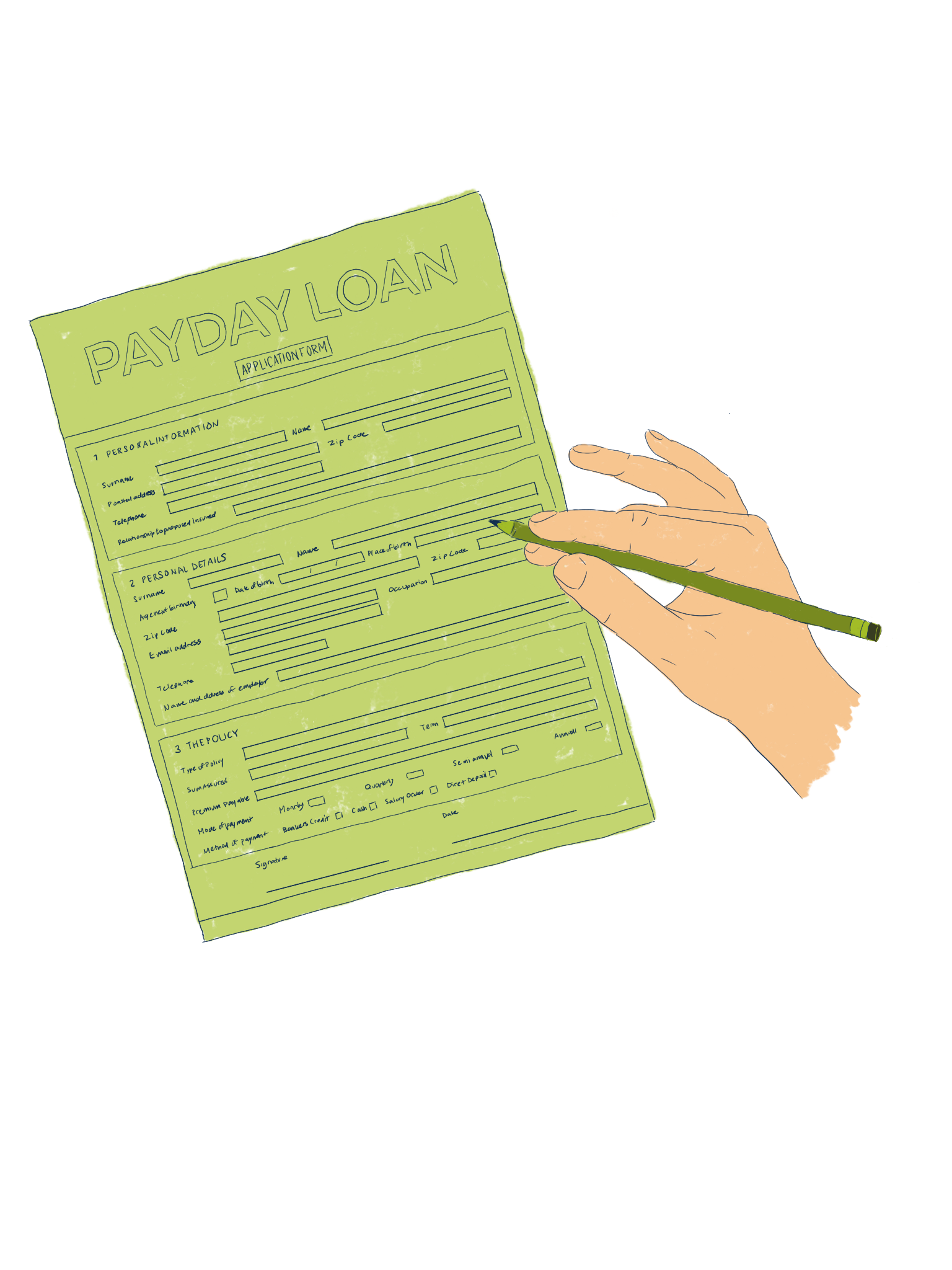There’s a cliff that so many of our families are standing on. They are staring down at the edge and one small thing could be just enough to throw them over.
Where we are
Millions of American families face financial shocks every year like an unexpected medical bill, the loss of income, a raise in rent, or loans coming out of deferment.
As a result of a tangled web of information about services, burdensome application processes, and payment systems, many families miss out on getting critical support to re-establish financial stability. More than a quarter of eligible people facing a financial shock receive no help from any Federally funded program, and Benefits Data Trust estimates that across just five programs, more than $60 billion/year in benefits are unclaimed1. And even for the families that do get access to benefits, millions waste countless hours and miss important days of work getting the help they qualify for and need. Transitioning to better jobs often requires training and gaining new skills, but this can be difficult for people to manage while still working to cover day-to-day essentials.

Of Americans who face a financial shock, 38% of Americans would face difficulty absorbing an emergency expense of $400.2
1 in 4 workers rely on safety net benefits at some point each year.3
1 Source: Benefits Data Trust
2 Source: Economic Well-Being of U.S. Households in 2021, Federal Reserve
Our approach
To start, we listened to people’s stories.
The Life Experience research team spoke with people nationwide about this moment in their lives and where the government process could have been simpler and more helpful. The listening sessions captured honest conversations about peoples' experiences, candid feedback on what could have worked better, and what really made a difference for them. Their stories have been combined and are represented here through illustrations. The quotes are real, but names have been changed.












The team conducted interviews in-person, virtually, in English, and in Spanish. Participants included people nine states and territories who represent a variety of life experiences—including those vulnerable to shocks, such as low-wage workers.
The team spoke with:
- 61 members of the public
- 12 frontline staff
- 17 state/program administrators
- 33 subject matter experts
Discovery insights
Framing for collective thinking about customer pain points
How might we improve people’s experience navigating and applying for different benefits at the same time to increase awareness, avoid confusion and redundancy, thereby improving efficiency for both program administrators and customers?
How might we encourage states and localities to use their federal funds to help people more quickly re-establish stability with available resources, and design with the most common financial shocks that may occur in mind?
How might we think about recovery and resiliency to include how we empower people through career transitions to better jobs and lasting stability?
Design Phase
Designing customer-centered solutions
Design phase pilot projects aim to build on discovery phase insights on priority customer pain points to tackle. Teams will develop and prototype solutions to measure what works. The design phase work will remain rooted in a human-centered approach, including customers in co-design and testing. The design phase will run through Fiscal Year 2023.
The project seeks to improve automated benefits determinations for people facing financial shock by improving underlying Federal data infrastructure. Benefits programs rely on income verification to determine eligibility. In cases where programs cannot verify income data, applicants must manually verify their income, a burdensome and time-consuming process. By improving income verification services and improving the quality of verification data coverage, the Federal government can better leverage existing Federal data systems and, in doing so, greatly improve the customer experience of applying for and seeking enrollment in benefits programs that use these systems. Longer term, improvements in income verification can potentially be piloted across agencies with benefits programs to improve the experience of individuals applying to multiple benefits programs.
Project objectives
The improving data services project will pilot improvements for benefits-related income verification services and determinations for Federal and State-administered benefits programs. It will also explore using these improvements across additional benefits programs, such as SNAP (Supplemental Nutrition Assistance Program) and TANF (Temporary Assistance for Needy Families).
Target milestones in 2023 include:
- Examine agencies’ legal authorities to reuse income data across SNAP, Medicaid and TANF while upholding privacy protections for individuals and consistent with applicable law
- Analyze data that tracks the use of the service to support development of the business model for the design and expansion of the service
- Test a prototype to offer multiple income verification data sources to agencies and States
- Propose improved guidance on reuse of income data across programs
- Initiate State and Federal agency pilots, to the extent allowable within existing authorities, to test the verification model
Primary deliverables in 2023 include:
- Develop baseline report with State needs and opportunities for data improvements
- Analysis of tracking data currently collected from an existing Federal services data hub to support development of business model
- Develop model for proof of concept to improve verifications
- Proposal for consolidated Federal guidance on reuse of income data
Measures of success
Key outcomes:
Successfully improving data services will decrease the time needed for benefits eligibility determinations, improve benefit verification (by increasing automatic verifications and the quality of the source data), increase sharing of data or supporting systems for eligibility determinations, and decrease the manual burden on applicants.
Design phase project measures:
- Increase in successful automatic verifications and decrease in the time it takes eligible claimants to enroll
- Improve coverage of automatic verifications for impacted group(s)
- Increase the percentage of successful verifications run through the existing Federal services data hub
The project, also known as the Accelerator, aims to help States adopt leading practices and innovate in Federal benefits delivery towards the goal of allowing families to apply for a suite of core benefits in 20 minutes and receive eligibility determinations within a day. This fast, simple access to multiple benefits is critical to help families weather financial disruptions such as a job loss, broken-down car, or unexpected bill that can often start a downward financial spiral. The Accelerator will provide multi-program tools, guidance, and templates to support State delivery transformation efforts in Medicaid, SNAP (Supplemental Nutrition Assistance Program), TANF (Temporary Assistance for Needy Families), CCDF (Child Care and Development Fund), LIHEAP (Low Income Home Energy Assistance Program), and other means-tested benefits that serve low-income families. The Accelerator will look to identify best practices, build products and services that help States replicate them, and identify opportunities for further Federal support for State innovation. The Accelerator will work with States to identify policy, resource, regulatory, staffing, technological, and other barriers to running efficient integrated benefits delivery, and work to systematically overcome those challenges through better cross-program decision-making and coordinated action.
Project objectives
In the first year, the Accelerator will focus on two areas: providing tools for improving procurement or development of state benefits technology systems, and providing clear guidance to States on best practice multi-program delivery methods. The Accelerator will conduct research with a cohort of States to validate and develop solutions that address procurement and IT modernization challenges. The Accelerator will also develop interagency guidance and templates on high-value topics to support state delivery (such as multi-program text messaging guidance).
Target milestones in 2023 include:
- Complete procurement research with States, stakeholders, vendors and non-profits. Report common barriers to address and capture best practices to elevate for the planning, procurement, and management of modern IT systems to support multi-program streamlined benefits delivery
- Build and pilot procurement solutions with States (if appropriate based on research)
- Test new methods of policy and product co-development with States and cross-government collaboration
- Develop and share FY24 priorities and plan
Primary deliverables in 2023 include:
- 1-3 State-validated solutions (toolkit, resource, best practices) to support IT or procurement barriers
- Develop initial 1-3 elements of the “one-day delivery toolkit” for States
- Develop multi-program text messaging guidance and templates (in collaboration with the Notifications project within the Having a child and early childhood Life Experience)
Measures of success
Key outcomes:
Develop tools and guidance for States to streamline policies and benefit determination operations and modernize their IT systems for public benefits management. The long-term outcome is accelerating State delivery of the multi-program 20-minute application and reach eligibility determinations in one day.
Design phase project measures:
- Target number of State agencies engaged in research and development of procurement solutions
- Target number of States piloting any developed procurement solutions
- Participant States shift towards streamlined multi-program applications and shortened time for eligibility determination and automated redetermination
Project Documentation
- Project Charter
- Project One-Sheet
- Design Project Summaries
- Customer Journey Map & Stories
- Information collection approved under OMB Control #3206-0276
- Life Experience Initiative Summary
- Executive Order 14058
- President’s Management Agenda
Agency collaborators
- General Services Administration (GSA)
- Department of Labor (DOL)
- Department of Housing and Urban Development (HUD)
- Department of Agriculture (USDA)
- Office of Management and Budget (OMB)
- Department of Education (ED)
- Department of Health & Human Services (HHS)
- U.S. Department of the Treasury (Treasury)
- Social Security Administration (SSA)
